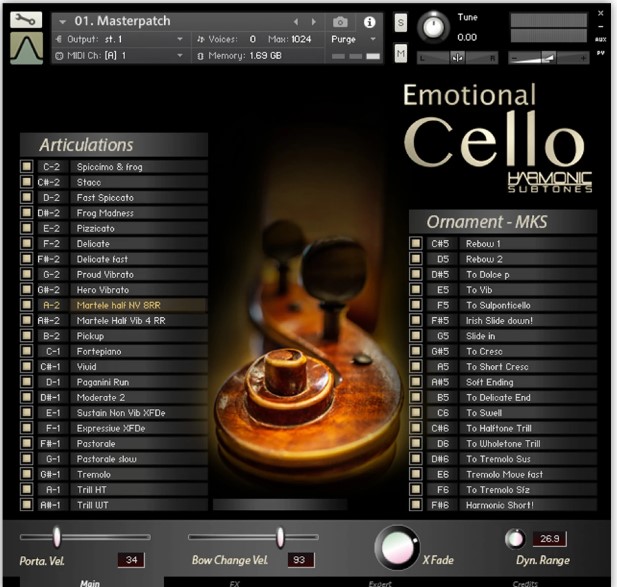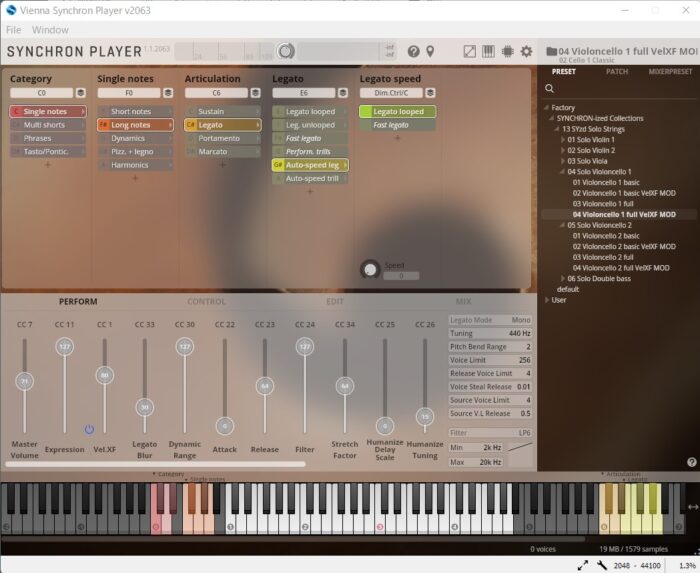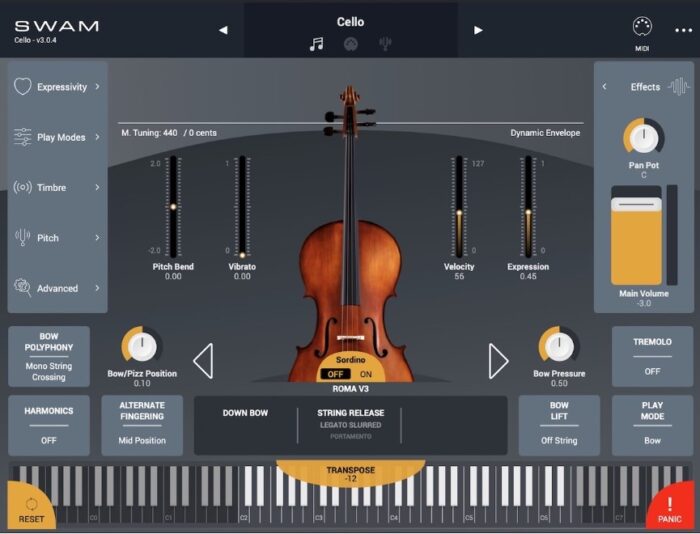I recently acquired SWAM-S (Cello), a physically modeled instrument by Audio Modeling, which has been gaining attention lately. I’m using it to study and experiment with cello miniatures as part of my research.
Both Emotional Cello by Best Service and SYNCHRON-IZED SOLO STRINGS by Vienna are sample-based libraries that I currently use for sequencing. The latter works well in an ensemble, but when used solo, it tends to sound somewhat synthetic—at least with my current skills. That’s why I primarily rely on Emotional Cello, which includes a wide range of sampled articulations.
However, both libraries are quite large, taking up tens of gigabytes of storage. On top of that, they require running sampler software like KONTAKT or Synchron Player within the DAW, adding another layer of complexity to the workflow.


In contrast, SWAM-S (Cello) is a remarkably small program, requiring only tens of megabytes. However, despite its small size, it consumes significant PC resources since all sounds are generated through real-time computation.
Since it models the actual playing behavior of a real cello, it falls under the category of "physical modeling." This means that instead of relying on pre-recorded samples, every aspect of performance - bowing direction, bow position, bow pressure, vibrato depth and frequency, attack, and more - must be meticulously adjusted via parameters.
When playing an actual cello, many of these nuances happen naturally, but with SWAM-S, they must be manually programmed. Without this detailed input, the result is just a monotonous sequence of pitch changes. I imagine that for those unfamiliar with playing a real instrument, it might be challenging to grasp how to fine-tune these settings effectively. There are probably some key techniques to make it sound more natural, though.

Fortunately, I have dabbled a bit in the cello, so I have a general understanding of why those parameters are necessary. However... I still haven't fully grasped the fine details of how adjusting each parameter affects the sound.
That's why I'm currently studying with a small cello piece. Through this process, I've realized that this sound library allows for quite a bit of freedom in controlling legato. With sampled instruments, achieving seamless transitions was quite challenging, but with the SWAM engine, it's much easier!